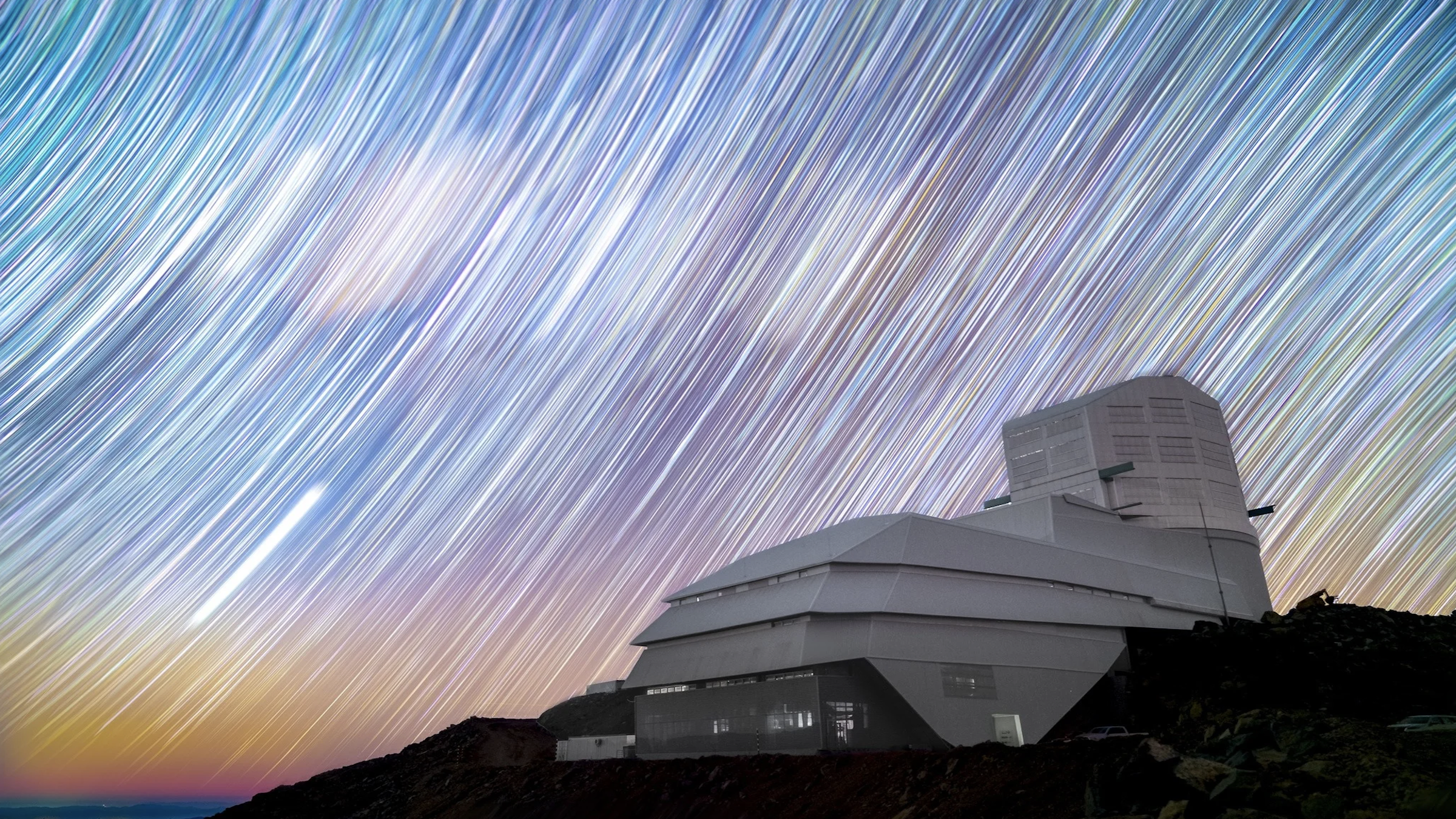Get ready! First images from the Vera C. Rubin Observatory are streaming live in less than an hour.
The Vera C. Rubin Observatory shared a "sneak peak" of its first highly-detailed space images this morning, with the full debut of all its new images coming at 11 a.m. EDT on Monday.

Update: The first image reveal from the groundbreaking Vera C. Rubin Observatory will stream live in less than an hour! You can watch the live debut right here at 11 a.m. EDT today (Monday, June. 23) or on the Observatory's YouTube page.
The Observatory has already offered a stunning sneak peak of the new images this morning, sharing three images of distant galaxies and nebulas. Check them out at the link above to get ready for the full debut, streaming below.
How to tune in
If you want to watch from home, a news conference will be streaming on YouTube in English and Spanish at 11:00 a.m. EDT today (Monday, June 23). The link to watch is posted on the observatory's website, and is also embedded above.
If you'd prefer to bask in the awe of the cosmos with friends, you may be able to attend a watch party near you — or even host one of your own. Groups will gather across the globe in planetariums and universities to admire the highly detailed images and videos as they are released. The observatory has shared links to a map of all registered watch parties, as well as a link to sign up to become a host.
During the news conference, the observatory team will introduce the Rubin Observatory before showcasing the new images and discussing their significance. Watch parties may also hear from local scientists and special guests. Be sure to check out the details of a watch party before you attend to learn about any extra programming.
The Rubin Observatory
The observatory, perched high on a mountain in the Chilean Andes, will peer at interstellar comets and dangerous asteroids, as well as larger objects, like twisting galaxies and exploding supernovas.
Inside Rubin lies the world's largest digital camera and six of the largest optical filters ever produced. Together, they allow researchers to observe different facets of the universe in many wavelengths of light and remarkably high detail.
Get the world’s most fascinating discoveries delivered straight to your inbox.
The camera will take a new high-resolution photo of the sky around every 40 seconds. The images will then be transmitted via fiber optic cables to a supercomputer in California, which will analyze the photos. When stitched together, the images can act as a time-lapse video of space, one that is planned to span 10 years.
Using its groundbreaking instruments, the observatory is expected to contribute to current understanding of widely debated phenomena, including dark energy and dark matter — two components that are thought to make up a vast majority of the universe, but remain poorly understood.
The new images could be the first of many that vastly improve our understanding of the cosmos. Whether you join a watch party or tune in from the comfort of your couch, these photos are not to be missed.
Editor's note: This article was updated Monday (June 23) to include a link to sneak peak images from the Observatory

Perri Thaler is an intern at Live Science. Her beats include space, tech and the physical sciences, but she also enjoys digging into other topics, like renewable energy and climate change. Perri studied astronomy and economics at Cornell University before working in policy and tech at NASA, and then researching paleomagnetism at Harvard University. She's now working toward a master's degree in journalism at New York University and her work has appeared on ScienceLine, Space.com and Eos.
You must confirm your public display name before commenting
Please logout and then login again, you will then be prompted to enter your display name.

